22 Dec 2020 | News and features
[vc_row][vc_column][vc_single_image image=”115928″ img_size=”full” add_caption=”yes”][vc_column_text]In the middle of the night on 28 November, 32 Cuban artists emerged from a five-hour meeting with officials of the Ministry of Culture. They had called on the Cuban government to refrain from harassing independent artists, to stop treating dissent as a crime, and to cease its violence against the San Isidro Movement, a group of artists and activists that had staged a hunger strike to protest the arrest and sentencing of a young rapper. The news of the encounter was shared with a crowd of about 300 artists, writers, actors and filmmakers who had stood outside for more than 12 hours to pressure ministers to open their doors. Nothing like this had ever happened before on the island.
Cubans may complain about food shortages and other restrictions on their lives, but members of elite professions rarely stick their necks out to defend anyone that the state labels a dissident. It is unheard of to exhort Cuban officials to listen to their most vocal critics in person. Although the artists of the San Isidro Movement were known to many, harassment of the group had not generated a major outcry. But in the past three years the Cuban government has issued laws imposing restrictions on independent art, music, filmmaking, and journalism, incurring the anger of many creators. When they saw live streamed videos of the weakened hunger strikers being attacked by security agents disguised as health workers, they decided that enough was enough.
“This is the first time that artists and intellectuals in Cuba are challenging the constitution,” said Cuban historian Rafael Rojas in a radio broadcast. “Their emphasis on freedom of expression and association challenges the legal, constitutional, and institutional limits of the Cuban political system.” In an interview with journalist Jorge Ramos, artist Tania Bruguera said the uprising started because, “a group of Cuban artists have gotten tired of putting up with being abused, harassed and pursued by police because of their political views and for their independence from state institutions.”
Within 48 hours, the Cuban government began to renege on verbal promises made at the meeting not to harass the protesters. President Diaz-Canel, Foreign Minister Bruno Rodriguez, Minister of Culture Alpidio Alonso, and Casa de las Americas director Abel Prieto all tweeted defamatory statements about the protesters. Cuban state television aired several programmes lambasting the San Isidro Movement, Tania Bruguera, and journalist Carlos Manuel Alvarez as mercenaries paid by the USA to destabilise the revolution. Bruguera and Luis Manuel Otero Alcantara were threatened by state security and detained for walking outside. Police blocked off and guarded the street where the Ministry of Culture is located. Several activists and independent journalists were placed under house arrest. Police shut down the headquarters of INSTAR, Tania Bruguera’s International Institute of Artivism. The San Isidro Movement was accused on Cuban television of breaking the windows of a hard currency store, but it was soon revealed that the man who committed the act was an agent provocateur working for Cuban police.
The protests come at a moment when the Cuban government has been shaken by the colossal loss of tourism revenue during the pandemic, the dwindling support from Venezuela, and the tightening of the US trade embargo during the Trump years. It was a sign of weakness that officials ceded to the demand for a face-to-face encounter with protesters.
But the state’s reaction is not surprising. Cultural Ministry officials are expected to respond to the demands of the Communist Party and State Security, not to citizens organised outside state sanctioned organisations. The slanderous campaigns on state television and social media are intimidation tactics aimed at preventing more Cubans from rising up. And it is also not unusual for the Cuban government to clamp down on dissent during economic downturns, as happened after the failed 10-million-ton harvest in 1971 and after the fall of the Berlin Wall in 1989.
What is extraordinary is that young Cuban intellectuals and artists have chosen to air their grievances publicly and collectively, and to support each other regardless of divergent political opinions. They have not been seduced by promises of favourable treatment from the state in exchange for silence, nor are they succumbing to the self-doubt that police states are so adept at inculcating in the citizenry. Most importantly, despite persistent police harassment, they are not giving up. They have adopted a name–27N–in commemoration of the day they first came together. A few members of the San Isidro Movement are part of 27N, but the group also includes representatives of other cultural fields that participated in the mass protest. 27N has formed subcommittees to attend to various tasks, from media relations to visual documentation to legal consultations.
27N continues to prepare for the next session with officials. They posted an initial list of demands in an online petition: political freedom for all Cubans, the release of the rapper Denis Solís, the cessation of state repression of artists and journalists who think differently, the cessation of defamatory media campaigns against independent artists, journalists and activists because of their political views, and the right to and respect for independence. On 27 November, Cuban officials promised a second meeting, but on 4 December the Ministry of Culture terminated the dialogue due to an “insolent” email from the protesters, who had requested to have a lawyer present and asked that harassment against them cease. Instead, the Ministry convened a meeting with small group of artists that were deemed to be loyal to the revolution. A 27N meeting at the Institute of Artivismo (INSTAR) in Havana.
The retreat may have been a result of orders from higher ranking officials as famous Cuban folk singer Silvio Rodriguez suggested. Rodriguez, considered by many to be an apologist for the regime, nonetheless understands that the officials in the cultural ministry were engaging in a defensive, though morally illegitimate, political move.
It is not surprising that prominent but independently minded Cuban artists and intellectuals such as singers Carlos Varela and Haydee Milanés have voiced support for the protesters. But it was nothing short of astonishing that the regional chapters of the Union of Cuban Artists and Writers (La Unión de Escritores y Artistas de Cuba, UNEAC) and the Hermanos Saíz Brigade on the Island of Pines posted a message of solidarity with the San Isidro Movement on 7 December on Facebook, decrying the Cuban government’s defamatory campaigns, writing on Facebook, “We will not advance toward a dialogue and mutual respect by resorting to dismissive insults.” Cuba’s political culture does not embrace public expressions of dissent within its ranks, nor do regional representatives of organization tend to speak out about activities in the capital.
Changes in Cuban culture played a significant role in the November 27 protest. For the young Cubans who rose up in rebellion, their smartphones are weapons they use both to inform and defend themselves. The legalisation of cell phone possession in 2008 and the opening of phone-based internet access in 2018 utterly transformed Cuban public discourse. Young Cubans use Facebook as an alternative public sphere in which to share news, air grievances, galvanise support for causes and cast aspersions on their leaders. Official state media has been upstaged. Cuba’s leaders are being thrust into arguments with disgruntled citizens on social media – and their responses are undignified to say the least. The Cuban government tries to block access to opposition media, but young Cubans fight back with VPN networks and mirror sites. In her daily podcast, Yoani Sánchez explains to listeners how to use a VPN. Dozens of independent journalism publications and streaming channels have blossomed on the internet, providing Cubans with news and views that would never appear in state media.
Communication between Cuban exiles and islanders is fluid and constant, signalling a complete breakdown of the state’s effort to drive a wedge between those inside and outside the country. Cubans have grown more emboldened by being able to see what others like them do and by witnessing what the state does to other Cubans. WhatsApp chats facilitate the creation of organisations based on special interests, including Cuban doctors on medical missions who share information about the oppressive labour conditions and constant surveillance they experience. The island now has independent animal rights groups, LGBTQ groups, feminist groups and anti-racist groups, all of which have organised smaller protests in recent years using social media.
The Cuban government continues to dismiss all forms of dissent on the island as the works of mercenaries trained, financed and mobilised by the United States government as part of a long-term regime change strategy. More than a few progressives outside Cuba parrot that rhetoric or at least feel obligated to prioritise their condemnation of US policies over concerns about Cubans’ civil rights. Many Cubans and Cuban-Americans, myself included, would argue that it is a mistake to rationalise or diminish the Cuban government’s repression of civil liberties and blame the embargo for the government’s stance toward its citizens. While USAID has awarded $16,569,889 for Cuba pro-democracy efforts since 2017, including financing of some of the opposition media, not all Cuban media beyond the island government’s control was invented by the CIA, nor is all Cubans’ opposition to their government a product of American meddling. Cubans do not need the United States to “help” them develop critical views of their government. “Anger rather than fear is the widespread sentiment among Cubans—a constant, built-in discomfort,” writes Carlos Manuel Alvarez. “We’re fed up with blind, doctrinaire zeal. Navigating Communism is like trying to cross a cobblestone road in high heels, trying not to fall, feigning normalcy. Some of us end up twisting our ankles.”
Most complaints of police repression, domestic violence, animal mistreatment, food shortages and poor public services in Cuba come from ordinary Cuban citizens who post their grievances on Facebook. No American planes are dropping leaflets from the sky to provide instructions. Cuban exiles send billions of dollars to relatives and friends each year, and much of that money pays for cell phones, internet, computers and other tech equipment that allow islanders to send and receive information. Important opposition media outlets, such as 14yMedio and CiberCuba, are entirely privately financed. Tania Bruguera and Yoani Sanchez have made a point of not accepting any funding from the US government, and savvy musicians and filmmakers use crowd funding campaigns to support their projects. The bulk of US State Department funding for Cuba-related activities stays in Miami, where media companies, publishers and cultural promoters can operate freely.
Cuban citizens may have limited legal rights, but they do not lack agency; they choose to apply for foreign grants or to work for media outlets funded by American sources. I do not make these points because I favour US-backed regime change – I am arguing for a more nuanced understanding of the dynamics that are leading to more frequent, more visible and more organised protests in Cuba. I am also arguing against the Cuban government’s position that does not differentiate between a CIA-financed assassin and an independent journalist who writes a brilliant essay about Cuba’s public health system, or an artist who recites poetry outside a police station.
The recent confrontation at the Ministry of Culture raised the hopes of many Cubans around the world. It also generated skepticism from those who say that dialogue with the Cuban government is futile, and that artists don’t have the knowhow to bring about political change. It’s worth recalling that the Charter 77 civic movement in former Czechoslovakia started in response to the arrest of a psychedelic rock band. The myth of Cuba as a political utopia is the revolution’s jugular: it draws tourist dollars and foreign aid, but its claim to truth is undermined by the harsh lived realities of 11 million citizens. Cuban artists and intellectuals have been enjoined to sustain that myth for 60 years. Their collective refusal to do now is a clear sign that change is on the horizon.
Coco Fusco is an artist and writer and the author of Dangerous Moves: Performance and Politics in Cuba (Tate Publications, 2015). She is a professor at The Cooper Union for the Advancement of Science and Art
This article was originally publishing in the North American Congress on Latin America here. Some minor alterations have been made to conform to Index house style[/vc_column_text][/vc_column][/vc_row][vc_row][vc_column][/vc_column][/vc_row]
10 Jul 2020 | News and features, Student Reading Lists
[vc_row][vc_column][vc_column_text]This week, 150 writers and academics signed an open letter expressing dismay at the current state of free and open debate. The list of signatories is like a Who’s Who of contributors to Index on Censorship magazine over the years. We have looked into our archives to dig out some of the articles we have published by some of the signatories.
Margaret Atwood defends fiction as a worthwhile use of free expression, Salman Rushdie decries total censorship in Pakistan, Noam Chomsky examines how atrocities are reported by those committing them, Nadine Strossman writing in 1995 paints a shockingly current picture of the USA today, and Eva Hoffman discusses her relationship with language as a Polish emigrant to Canada.
Don’t tell us what to write – Margaret Atwood
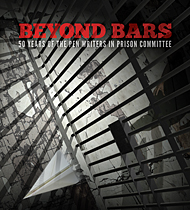 Writing for a special edition of Index on Censorship in 2010, which marked 50 years of the Pen Writers in Prison Committee, Margaret Atwood upheld the importance of being free to write unfettered by expectations or demands. Atwood explored the impulse of journalists to reveal the truth, writing: “You can take the guts out of the investigative journalists, both figuratively and literally, but so far no one has been able to completely suppress the human urge that’s at least as old as the Book of Job: the need to tell.” She also examined attitudes towards fiction. Being a self-described fiction writer and poet, Atwood talked about how fiction writers often write with intentions to make a certain impact, perhaps to better their readers or the world at large, but placing this as a caveat for fiction to be considered worthwhile,”is to fall into the very same kind of thinking that leads to censorship.” Click here to read the full article.
Writing for a special edition of Index on Censorship in 2010, which marked 50 years of the Pen Writers in Prison Committee, Margaret Atwood upheld the importance of being free to write unfettered by expectations or demands. Atwood explored the impulse of journalists to reveal the truth, writing: “You can take the guts out of the investigative journalists, both figuratively and literally, but so far no one has been able to completely suppress the human urge that’s at least as old as the Book of Job: the need to tell.” She also examined attitudes towards fiction. Being a self-described fiction writer and poet, Atwood talked about how fiction writers often write with intentions to make a certain impact, perhaps to better their readers or the world at large, but placing this as a caveat for fiction to be considered worthwhile,”is to fall into the very same kind of thinking that leads to censorship.” Click here to read the full article.
Last chance? Salman Rushdie

Writers and Apartheid, the June 1983 issue of Index on Censorship magazine.
Is there dark humour to be found in an oppressive regime’s censorship? Salman Rushdie opened his piece, first published in Index in 1983 and republished in 2012 in the 40 year anniversary special issue, by examining this question through his first encounters with the censorship of films as a child. Censorship, he wrote, became less of an abstract source of the absurd when he began to experience it as a personal reality. On returning to Karachi, Pakistan after studying at Cambridge, Rushdie’s attempts at expression and creativity were curtailed by censors, at one point being told “ ‘the word pork may not be spoken on Pakistan television.’” He wrote of the total censorship enacted by the Pakistani government who, unlike the Indian government, had a firm and terrifying grip over journalists. What are the effects of such censorship? Rushdie questioned. “Where there is no debate, it is hard to go on remembering, every day, that there is a suppressed side to every argument. It becomes almost impossible to conceive of what the suppressed things might be.” Click here to read the full article.
Confronting the Monster – Noam Chomsky
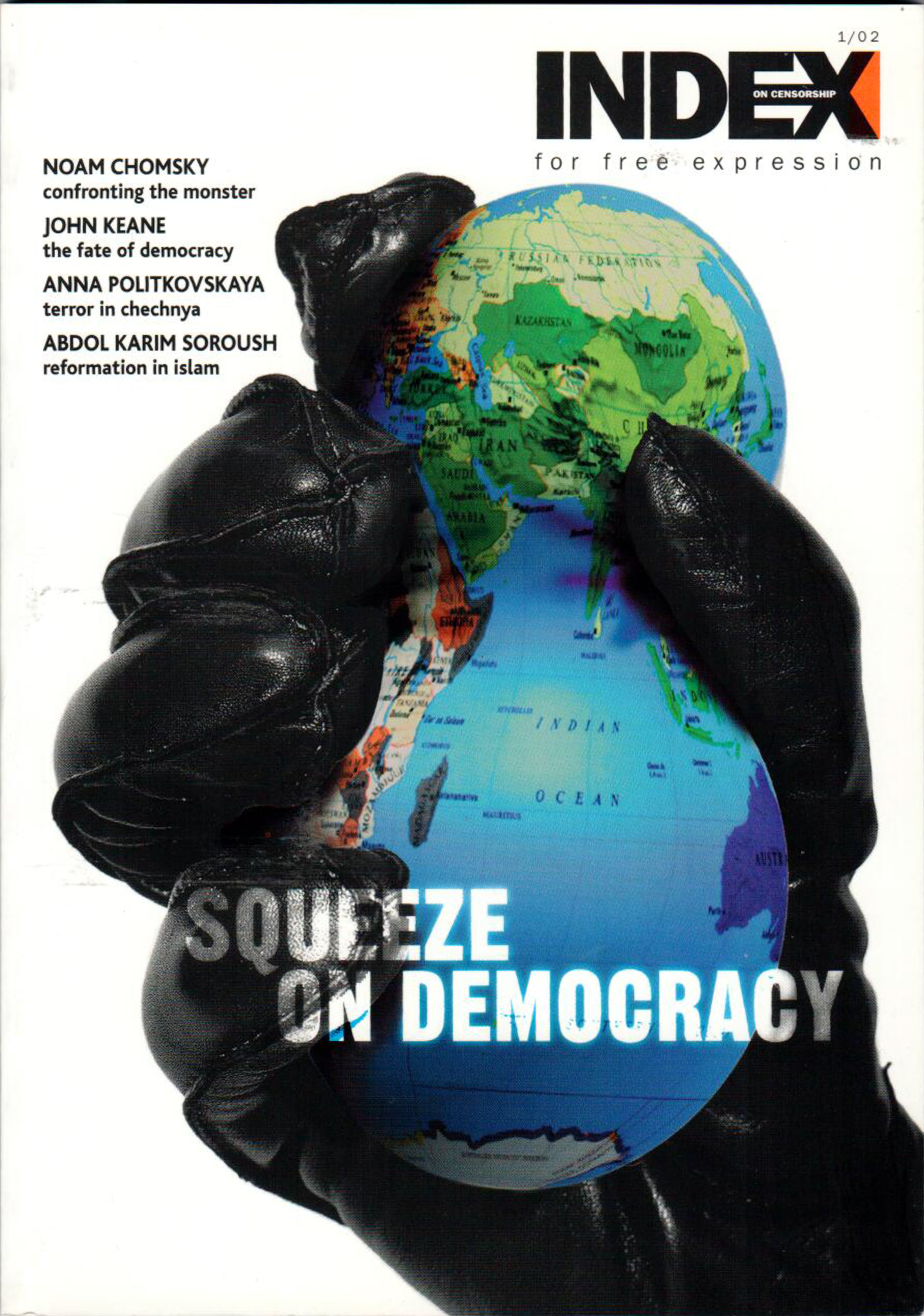
Squeeze on democracy, the spring 2002 issue of Index on Censorship magazine.
Writing in early 2002, arguably of the most pivotal points in recent US history, Noam Chomsky examined the coverage, or lack thereof, of the reaction and aftermath of the 9/11 terrorist attacks, and uses this example to dissect the notions of “them” and “us” in reporting on atrocities. The bombing campaign carried out by the US army on Afghanistan in October 2001, Chomsky wrote, left millions of Afghan civilians starving. Appeals to the US for an end to the bombing from UN bodies were rejected, and this was “virtually unreported”, as was a warning of humanitarian catastrophe from the Food and Agricultural organisation. Chomsky explained that the erasure of one’s own crimes against humanity is not a uniquely American phenomenon writing: “Only those entirely ignorant of modern history will find any of this surprising.” In the early 1990s, Chomsky wrote, the British government removed from the Public Record Office all files concerning the use of poisonous gas against “uncivilised tribes”. He summed up “the powerful determine what counts as history, what passes through the filters is the terrorism of the weak against the strong and their clients.” Click here to read the full article.
Diverting Tactics – Nadine Strossman

Rewriting history, the May 1995 issue of Index on Censorship magazine
Despite having been written in 1995 Nadine Strossman’s article examining attacks on The Bill of Rights, freedom of expression, and the groups in US society these attacks have the harshest impact on, feels startlingly current. Strossman wrote that the government proposals to criminalise desacration of the US flag would amount to “punishing the political protest that should be the most protected form of expression in a democratic society”. The violent dispersal of the ongoing protests sparked by the murder of George Floyd is a chilling reminder of the assault on freedom of expression in the USA today. Strossman highlighted how the rights of non-white groups are being specifically targeted through the disparagement of affirmative action programmes, which displays “the diminished national commitment to racial justice”. This is another topic, it perhaps goes without saying, that is an issue in present-day America. Strossman dissected the actions of politicians as quick fixes for societal problems. Click here to read the full article.[/vc_column_text][/vc_column][/vc_row][vc_row][vc_column][vc_column_text]Words between worlds – Eva Hoffman and Raja Shehadeh
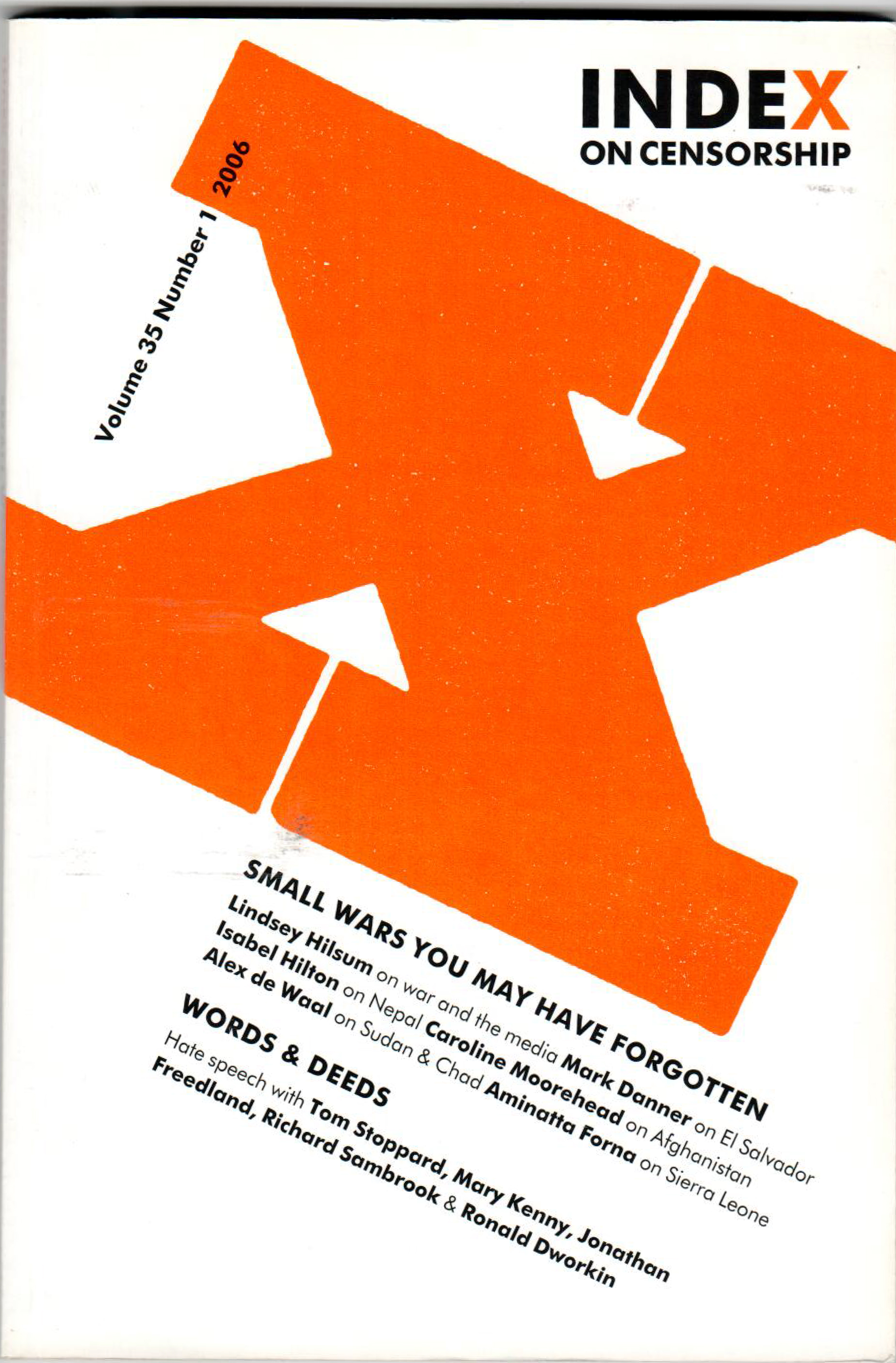 Eva Hoffman, author of Lost in Translation, spoke to then-editor Judith Vidal-Hall about her experience of emigrating from Poland to Canada as a child and developing a new relationship with language. As her native Polish became surplus to requirement, and English loomed as an unknown quantity, “I discovered to what extent language and culture constructs us really. To what extent it informs not only our larger assumptions and ideologies about the world”. Hoffman told Vidal-Hall how, having absorbed English as a second language, she found it to be beneficial as a writer; it gave her a vantage point of two cultures, two worlds. When asked why she started to write, Hoffman explained that through her words she might connect with people who had shared similar experiences: “I had some hope that perhaps I was trying to talk about things that had some meaning for other immigrants as well, that perhaps there was a kind of broader meaning to it”. Click here to read the full article.[/vc_column_text][/vc_column][/vc_row][vc_row][vc_column][three_column_post title=”You might also want to read” category_id=”7273″][/vc_column][/vc_row]
Eva Hoffman, author of Lost in Translation, spoke to then-editor Judith Vidal-Hall about her experience of emigrating from Poland to Canada as a child and developing a new relationship with language. As her native Polish became surplus to requirement, and English loomed as an unknown quantity, “I discovered to what extent language and culture constructs us really. To what extent it informs not only our larger assumptions and ideologies about the world”. Hoffman told Vidal-Hall how, having absorbed English as a second language, she found it to be beneficial as a writer; it gave her a vantage point of two cultures, two worlds. When asked why she started to write, Hoffman explained that through her words she might connect with people who had shared similar experiences: “I had some hope that perhaps I was trying to talk about things that had some meaning for other immigrants as well, that perhaps there was a kind of broader meaning to it”. Click here to read the full article.[/vc_column_text][/vc_column][/vc_row][vc_row][vc_column][three_column_post title=”You might also want to read” category_id=”7273″][/vc_column][/vc_row]
1 Jul 2020 | China, News and features, Student Reading Lists
[vc_row][vc_column][vc_column_text]
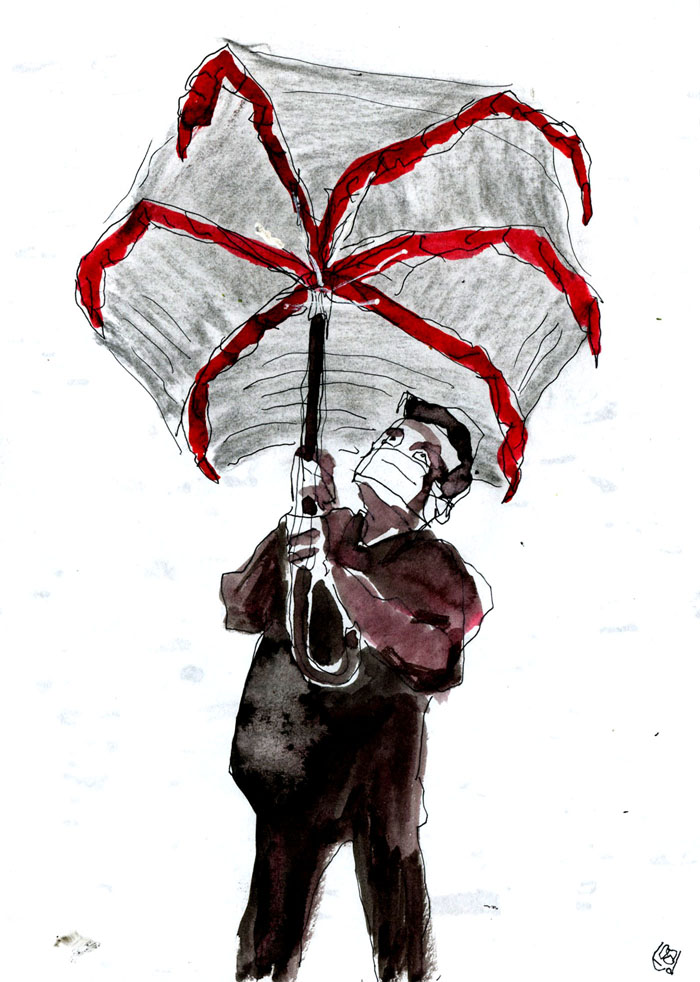
Illustration from cartoonist tOad published today in response to the new law. twitter.com/t0adscroak, www.unsitesurinternet.fr
The National Security Law passed on 30 June in Hong Kong has dealt a massive blow to the city’s status as an autonomous region into which the Chinese government’s suppression of freedom of expression doesn’t encroach. The new law will criminalise “any act of secession, subversion of the central government, terrorism or collusion with foreign or external forces”.
Language like this, as those on the mainland may have experienced, could be manipulated to apply to any behaviour the Chinese government doesn’t like, leaving journalists, activists, protesters and campaigners at risk. Activists in Hong Kong have already begun to shut down their operations out of fear of reprisal in the wake of the law.
Since 1997, when Hong Kong was handed back to China having previously been a British colony, Hongkongers have enjoyed freedom of expression, including a flourishing free press, under the “one country, two systems” constitutional principle. As this principle begins to crumble, we look back at pieces published in Index magazine in 1997 which explored the implications of the handover and the future relationship between mainland China and Hong Kong.
In this edited version of the speech given by Professor Helen Fung-Har Siu in Hong Kong in 1996, she explored the national identity of Hong Kongers and how it intersected with the oppressive nature of the Chinese authorities. In the years preceding the 1997 handover, the people of Hong Kong enjoyed freedom of expression; Siu noted that one in six people there marched in protest at the 1989 Tiananmen Square Massacre. Dissecting the socioeconomic developments in Hong Kong through the 1970s and 80s, Siu questioned how the region and its people, who are accustomed to independence from China, would adapt to its new relationship with the People’s Republic.
Published in early 1997 in anticipation of the handover, Geremie R Barmé, author of Shades of Mao: The Posthumous Cult of the Great Leader, wrote on the flow of popular culture from Hong Kong and Taiwan to mainland China through the 1980s. He explored how the lure of Beijing’s culture waned through the 70s, leading people to soak up the film and music coming from the south, despite attempts by the authorities to censor it. Hong Kong, independent from the Chinese authorities, acted as a conduit between the people in mainland China and Taiwan, and indeed the rest of the world. Barmé predicted that, as Hong Kong returned to China, the subsection of society supporting communist ideals would be brought to the fore by the mainland.
He wrote: “The patriotic significance of Hong Kong’s return to the mainland is lost on no-one. It is part of the final process of what the Communist authorities, and many people in China, see as the reunification of a divided nation.”
Ma Jian, an artist who left Beijing for Hong Kong in 1990, shared his feelings of liberation as he crossed the border and reflects on the suppression of his art on the mainland. Demanding rights and freedom from the Chinese authorities was, he wrote “like being on a battlefield”. Jian wrote that he would remain in Hong Kong after the handover, but projected a lack of optimism about his future freedoms.
“As we watch, incredulously, pre-ordained history advances, or rather, steps backwards to meet us,” he wrote. “No-one asks whether we accept the past, whether we can go and live the time we have already lived. It is as though, studying at middle school, we are suddenly sent back to kindergarten.”
In July 1998, Edward Lucie-Smith visited Hong Kong to find out how the city was acclimatising to the handover one year on. Finding local people unwilling to discuss at length the direction freedom of speech had taken, Lucie-Smith looked to global economic developments and how they could impact Hong Kong’s political future, and in turn the future of freedom of expression. Hong Kong faced an economic downturn in 1998, along with other so-called ‘tiger-economies’, meaning the Hong Kong Chinese elite, who were middlemen between the democratic forces in Hong Kong and the Chinese authorities, may have chosen to move to other parts of the world, leaving Hong Kong and its people more at risk of being ideologically swallowed up by the mainland.
He wrote: “The general feeling was that the British were handing over an economic jewel – a financial mechanism so successful and so finely tuned that the mainland Chinese government would be foolish to interfere with its functioning. But would it be able to resist tinkering, on ideological grounds, with the ‘special economic zone’ within China that Hong Kong was now to become?”
Published in January 1997, Jonathan Mirsky, then East Asia editor of The Times, wrote on how freedom of expression began to crumble in Hong Kong in anticipation of the handover. He described how news channels reported on China in a “vapid or grovelling” manner, to avoid attempts at censorship by Chinese representatives in Hong Kong.
Outspoken democratic politicians told Mirsky how their colleagues no longer wanted to be associated with them. Organisations were expected to plan celebrations for the handover, and comply. Mirsky predicted a dismal future for Hong Kong where loyalty to the Party would be an overriding expectation.
Charles Goddard, at the time of writing a member of the Hong Kong Journalists Association, discussed Hong Kong’s position as eyes on China for the rest of the world, where issues such as human rights abuses in mainland China could be discussed and dissidents from the Chinese authorities could find a relatively safe haven. Goddard, however, highlighted the dangers to journalists in Hong Kong reporting negatively about China, predicting that the status of the city as a place where freedom of expression could flourish would only diminish.
Liu Dawen, at the time of writing the editor of Front Line magazine, took an optimistic view of Hong Kong’s future, believing that the spirit of democracy would not wane.
“In the longer term, the Party cannot stem the ‘raging tide’ of democracy indefinitely either in Hong Kong or in the People’s Republic. When things reach a certain pitch, the pendulum must swing back in the opposite direction,” he wrote.
Charting the arrests and imprisonments of Chinese journalists, Asia-Pacific researcher for Reporters San Frontieres Barbara Vital-Durand painted a picture of China as a country which cracked down harshly on outspoken dissidents from the party line. She foreshadowed a world in which, post-handover, Chinese authorities would extend the jaws of censorship to crush Hong Kong journalists, and access to the internet on the mainland would be tightly controlled.
“Journalists’ organisations and free speech groups have been unsuccessful in getting the British authorities – or subsequently China’s Preparatory Working Committee (PWC) – to abolish several legislative measures which, if left in place, will provide the Chinese authorities with some powerful weapons to use against the media,” she wrote.[/vc_column_text][/vc_column][/vc_row][vc_row][vc_column][vc_basic_grid post_type=”post” max_items=”3″ grid_id=”vc_gid:1593615252756-723f64f2-cdee-10″][/vc_column][/vc_row]
12 Mar 2020 | News and features, Student Reading Lists
[vc_row][vc_column][vc_column_text]In August 2019 the Indian government under Narendra Modi, leader of the the Hindu nationalist Bharatiya Janata Party, revoked Article 370 of the Indian constitution. The article had granted the state of Jammu and Kashmir the autonomy to write their own constitution and make their own laws. Since the article was revoked, residents of Jammu and Kashmir have been subjected to the world’s longest internet shutdown, a serious breach of their right to free expression and to access information. As the ban on high-speed internet continues, Index looks back on the history of freedom of expression in India, from the years following The Emergency, to the present.

Libya: Criticise & be killed, the December 1980 issue of Index on Censorship magazine
In 1975 Prime Minister Indira Gandhi was convicted of election malpractice conducted during her 1971 campaign. Despite this, she clung onto power and declared a state of emergency which lasted for 19 months, known as The Emergency. During this time, members of the political opposition were imprisoned and the press heavily censored. In this article written in 1980, the year Gandhi was re-elected, Michael Henderson questions if Indian journalists have a long enough memory and a robust enough spirit to stand up to a prime minister with a clear and recent track record of control of the press.
Read the full article[/vc_column_text][/vc_column][/vc_row][vc_row][vc_column][vc_column_text]

Black voices in South Africa, the December 1984 issue of Index on Censorship magazine
In 1984, George Theiner writes of an India still scarred by The Emergency and a visit to Index on Censorship by Mr Justice A N Grover, chairman of the Press Council of India, who took issue with the magazine’s continuing criticism of the Indian press. Theiner interviewed journalists about the future of democracy and a free press under Indira Gandhi. He found a mixture of those who were still in shock about the censorship during The Emergency, and those who were complacent in a belief that it couldn’t happen again. (The future of India under Gandhi came to be something of a moot point as, in October 1984, a few months after this article was published, she was assassinated by her own bodyguards.)
[/vc_column_text][vc_column_text][/vc_column_text][/vc_column][/vc_row][vc_row][vc_column][vc_column_text]
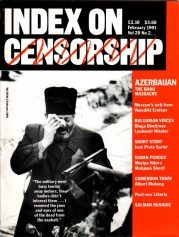
Azerbaijan: the Baku Massacre, the February 1991 issue of Index on Censorship magazine
In 1991 India had a free press… in newspapers. Television and radio were state-owned and state-exploited. Other innovative types of media became a political battleground, with opposition parties promising to release the government’s grip on a news outlet that was fast evolving. Sidharth Bhatia’s piece details the independent video magazines set up by journalists which had to be rented from a video shop. When these magazines became successful, reaching a wide audience and providing information not stifled by a state agenda, government censorship began to encroach upon them.
Read the full article [/vc_column_text][/vc_column][/vc_row][vc_row][vc_column][vc_column_text]
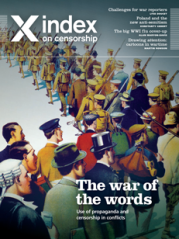
The war of the words, the March 2014 issue of Index on Censorship magazine
Prayaag Akbar examines the role the rich and powerful have in press censorship in India, but in this case it is wealthy business owners, rather than the government, who come under scrutiny. Media outlets who find themselves owned by a large business conglomerate, may then be under pressure to self-censor in order to avoid reporting negatively on the hand that feeds them. Akbar cites examples of the collision of business interests with journalistic integrity as the richest men in India buy up large portions of the national media groups.
Read the full article
[/vc_column_text][/vc_column][/vc_row][vc_row][vc_column][vc_column_text]
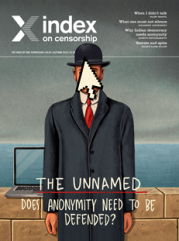
The unnamed, the September 2016 issue of Index on Censorship magazine
Is online anonymity allowing trolls to abuse women without consequences, or it is vital for the safety of those whose expression does not follow the party line? In 2016, as Twitter became more widely used in India, and issues of trolling became apparent, government ministers suggested removing the anonymity of trolls in a bid to increase accountability. Suhrith Parthasarathy reports on how state involvement with online expression could lead to the anonymity of activists being revoked to protect state interests.
Read the full article[/vc_column_text][/vc_column][/vc_row][vc_row][vc_column][vc_column_text]
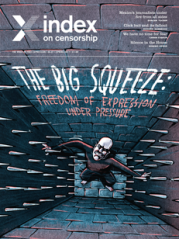
The Big Squeeze, the April 2017 issue of Index on Censorship magazine
In November 2016, a Supreme Court order made it obligatory to stand during the national anthem, which is played in Indian cinemas before the film begins, equating being patriotic with being a law-abiding citizen. Lawyer and writer Suhrith Parthasarathy examines the legal complexities of enforcing shows of patriotism in a country whose constitution guarantees freedom of expression, and speaks to people who have been subject to police interviews for choosing to stay seated.
Read the full article[/vc_column_text][/vc_column][/vc_row][vc_row][vc_column][vc_column_text]

Is This All the Local News?, the April 2019 issue of Index on Censorship magazine
Rituparna Chatterjee reports on the importance of local news, and threats faced by local news journalists in India. Journalists working in rural parts of India can face pay too low to survive on, and can be susceptible to bribes from local police officers and politicians, keen to censor scandals. Chatterjee also highlights how tribal and indigenous communities can end up excluded from the national narrative of India when large media conglomerates do not report on issues in the areas they live in.
Read the full article[/vc_column_text][/vc_column][/vc_row][vc_row][vc_column][vc_column_text]
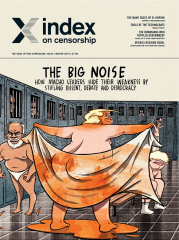
The Big Noise, the December 2019 issue of Index on Censorship magazine
The Emergency of 1975-1977 has been seen in later years as a blip in freedom of expression in India. However, since the election of Modi to prime minister in 2014, freedom of expression in India is taking a hit. Modi’s supporters are instilling fear and committing violence against those considered outsiders, often Muslims. Such violence is not being roundly condemned by their leader; his silence is taken as tacit approval. Meanwhile the internet shutdown imposed on Kashmir has not been fully lifted, an attack on access to information.
Read the full article[/vc_column_text][/vc_column][/vc_row]

 Writing for a special edition of Index on Censorship in 2010, which marked 50 years of the Pen Writers in Prison Committee, Margaret Atwood upheld the importance of being free to write unfettered by expectations or demands. Atwood explored the impulse of journalists to reveal the truth, writing: “You can take the guts out of the investigative journalists, both figuratively and literally, but so far no one has been able to completely suppress the human urge that’s at least as old as the Book of Job: the need to tell.” She also examined attitudes towards fiction. Being a self-described fiction writer and poet, Atwood talked about how fiction writers often write with intentions to make a certain impact, perhaps to better their readers or the world at large, but placing this as a caveat for fiction to be considered worthwhile,”is to fall into the very same kind of thinking that leads to censorship.” Click
Writing for a special edition of Index on Censorship in 2010, which marked 50 years of the Pen Writers in Prison Committee, Margaret Atwood upheld the importance of being free to write unfettered by expectations or demands. Atwood explored the impulse of journalists to reveal the truth, writing: “You can take the guts out of the investigative journalists, both figuratively and literally, but so far no one has been able to completely suppress the human urge that’s at least as old as the Book of Job: the need to tell.” She also examined attitudes towards fiction. Being a self-described fiction writer and poet, Atwood talked about how fiction writers often write with intentions to make a certain impact, perhaps to better their readers or the world at large, but placing this as a caveat for fiction to be considered worthwhile,”is to fall into the very same kind of thinking that leads to censorship.” Click 


 Eva Hoffman, author of Lost in Translation, spoke to then-editor Judith Vidal-Hall about her experience of emigrating from Poland to Canada as a child and developing a new relationship with language. As her native Polish became surplus to requirement, and English loomed as an unknown quantity, “I discovered to what extent language and culture constructs us really. To what extent it informs not only our larger assumptions and ideologies about the world”. Hoffman told Vidal-Hall how, having absorbed English as a second language, she found it to be beneficial as a writer; it gave her a vantage point of two cultures, two worlds. When asked why she started to write, Hoffman explained that through her words she might connect with people who had shared similar experiences: “I had some hope that perhaps I was trying to talk about things that had some meaning for other immigrants as well, that perhaps there was a kind of broader meaning to it”. Click
Eva Hoffman, author of Lost in Translation, spoke to then-editor Judith Vidal-Hall about her experience of emigrating from Poland to Canada as a child and developing a new relationship with language. As her native Polish became surplus to requirement, and English loomed as an unknown quantity, “I discovered to what extent language and culture constructs us really. To what extent it informs not only our larger assumptions and ideologies about the world”. Hoffman told Vidal-Hall how, having absorbed English as a second language, she found it to be beneficial as a writer; it gave her a vantage point of two cultures, two worlds. When asked why she started to write, Hoffman explained that through her words she might connect with people who had shared similar experiences: “I had some hope that perhaps I was trying to talk about things that had some meaning for other immigrants as well, that perhaps there was a kind of broader meaning to it”. Click 







